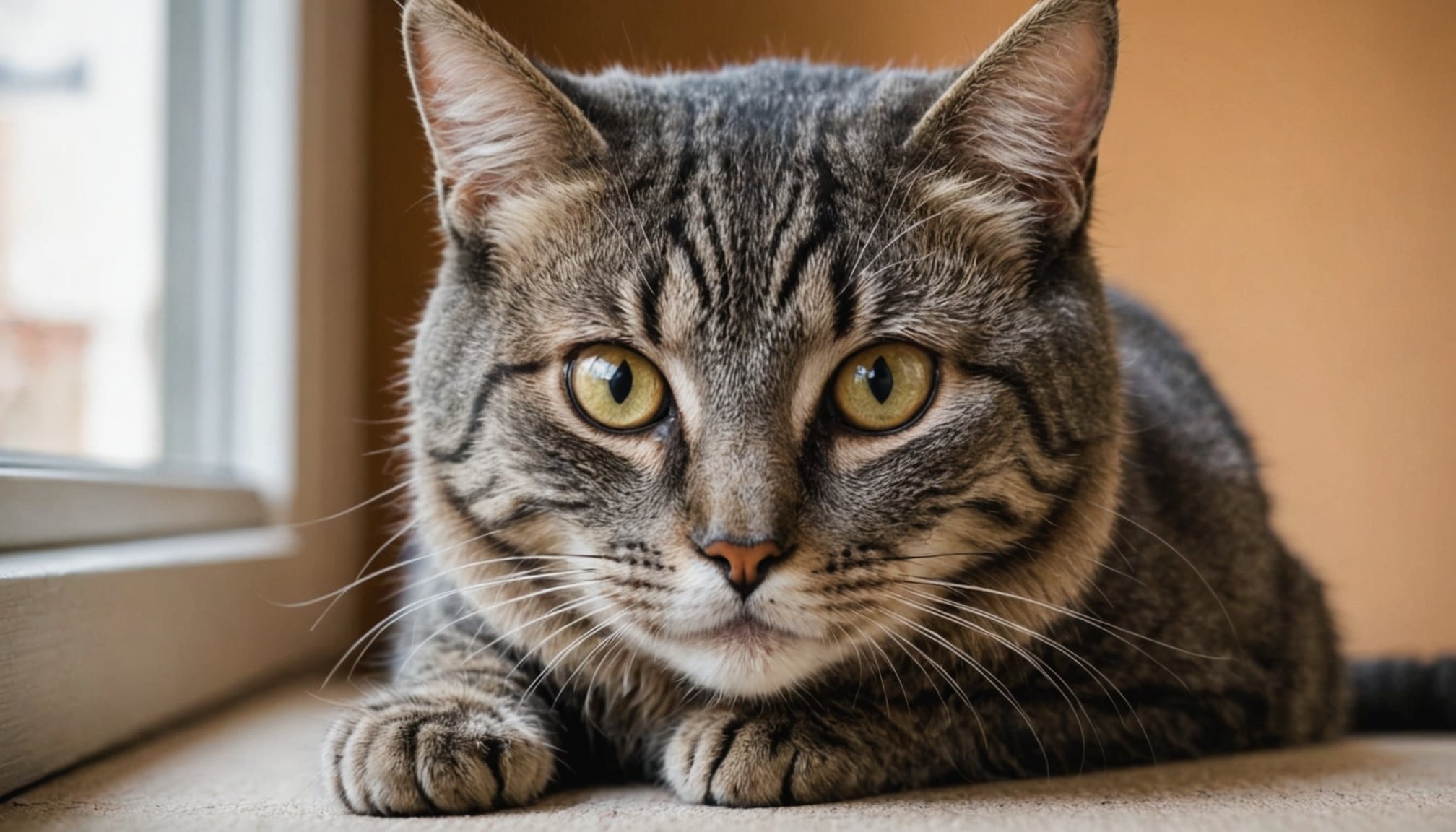Understanding Feline Separation Anxiety
Feline separation anxiety is a condition where cats exhibit signs of stress and worry when left alone. It’s crucial to recognize these distress signals to support your pet’s wellbeing effectively. This condition can affect any cat regardless of breed or age, causing changes in cat behavior that can be challenging for owners to manage without intervention.
Recognizing Separation Anxiety
Cats may display various signs when experiencing separation anxiety. Some common symptoms include:
Also read : Effortless tips for calming your cat during nail trimming sessions!
- Excessive meowing or vocalization, often indicative of distress during your absence.
- Destructive behavior such as scratching furniture or knocking over items.
- Inappropriate elimination, where a cat might urinate or defecate outside their litter box.
These behaviors are often attempts by the cat to cope with the anxiety of being without their owner. It’s pivotal to observe these patterns early on.
Importance of Early Intervention
Addressing feline separation anxiety promptly can prevent escalations in these disruptive behaviors. Through careful monitoring of cat behavior, owners can apply appropriate interventions or seek professional guidance. Techniques such as gradual departure training, enrichment activities, or even consulting with a feline behaviorist can offer effective solutions. Understanding and managing these distress signals can immensely improve both the cat’s and the owner’s quality of life.
Also read : Transform your cat”s nighttime routine: effective tips for aligning their sleep schedule with your lifestyle
Behavioral Strategies for Alleviating Anxiety
Managing a cat’s anxiety involves employing effective behavioral strategies that focus on engagement techniques and positive reinforcement.
Utilizing Environmental Enrichment
Creating a stimulating environment significantly aids in reducing anxiety. Incorporate a variety of toys and activities that engage a cat’s senses and natural instincts. Interactive playtime routines can foster mental and physical stimulation, crucial for alleviating stress. Set up a designated safe space for the cat, where it can retreat and feel secure. This space should be equipped with comfortable bedding and familiar scents.
Gradual Desensitization Techniques
To help cats become more comfortable with solitude, gradually increase the time they spend alone. Begin with short periods and slowly extend the duration as the cat becomes accustomed to the absence. Associating absence with positive experiences, like rewarding treats or favourite toys, can make transitions smoother. Be sure to reinforce calm behavior during departures and arrivals, using soothing tones and gentle motions.
Training Methods
Consider implementing clicker training to encourage positive behaviors. This method rewards desired actions, building the cat’s confidence. Teaching simple commands also reinforces structure and routine. Utilize behavior modification techniques, such as redirecting undesired actions to appropriate alternatives, to guide the cat towards calm, confident behavior.
Environmental Adjustments
Creating a calming and comfortable environment for your cat can significantly reduce anxiety. Establishing a consistent routine is crucial. Cats thrive on predictability, so feeding, play, and rest times should follow a regular schedule. This routine helps them feel secure and less anxious.
To set up an ideal space, consider including comfort items such as soft beds, favourite toys, and scratching posts. These items can make the environment more inviting and provide your cat with necessary stimulation and relaxation. It’s also beneficial to incorporate anxiety-reducing setups in their space. Consider hiding spots or elevated perches where your cat can retreat and observe from a distance.
The role of scent and sound is profound in creating a tranquil atmosphere. Utilizing pheromone diffusers can mimic natural calming scents, helping to soothe your cat. Playing soft music or nature sounds can mask intimidating noises from outside and further promote relaxation.
By making thoughtful environmental changes, you can transform your home into a haven for your feline companion. Comfort items and consistent routines are the cornerstone of this transformation, significantly affecting your cat’s well-being. Keep experimenting to discover what works best for reducing your cat’s stress and anxiety levels.
Calming Products and Aids
Navigating through the world of calming products and anxiety aids can be a transformative experience for both pets and their owners. Understanding different options is key to managing pet anxiety.
Overview of Available Products
Calming collars come in various types and are designed to release calming pheromones that mimic natural soothing scents. Their effectiveness often lies in their ability to reduce symptoms of anxiety without invasive methods. The benefits of pheromone diffusers and sprays are also notable, as they create a calming environment with continuous release of pheromones. A non-intrusive solution, these products can travel with you, ensuring consistent calming effects.
Additionally, supplements such as CBD and herbal remedies like chamomile offer alternative anxiety aids. These are valued for their natural properties and versatility in addressing different levels of stress.
Usage and Recommendations
When choosing calming products, it is crucial to select the ones suited to your pet’s specific needs. This involves considering factors such as size, temperament, and the environment. For optimal results, combining these products with behavioral strategies is recommended. Techniques like positive reinforcement and creating a structured routine can augment efficacy.
Expert recommendations highlight the importance of customizing solutions to individual pets. Case studies show dramatic improvements when owners incorporate both products and behavioral strategies. Each pet is unique; therefore, a tailored approach often yields the best results.
Seeking Professional Help
When should you seek veterinary advice or consult a pet behaviorist? If your cat exhibits unusual behaviors like aggression or excessive fear, professional expertise becomes crucial. These professionals can precisely assess if there’s an underlying medical issue or if it’s purely a behavioral concern.
Understanding the potential need for medication can be daunting, but expert consultation can clarify whether it’s necessary. Veterinarians might recommend medication as part of a holistic treatment plan, especially if your pet’s behavior is linked to anxiety or other medical conditions. Remember, medication should never be the sole approach; it’s a part of a broader management strategy.
Behavioral therapy options are diverse and can be tailored to suit your cat’s unique needs. Pet behaviorists often employ methods like positive reinforcement, environmental enrichment, and systematic desensitization. These strategies aim to modify your cat’s responses and improve their overall well-being. Engaging with these experts can provide valuable insights and tools to better manage and understand your cat’s behavior.
Finally, keep in mind that resolving behavioral issues is a journey. Seeking expert consultation ensures you have the necessary support and guidance to help your pet thrive in a nurturing environment.











